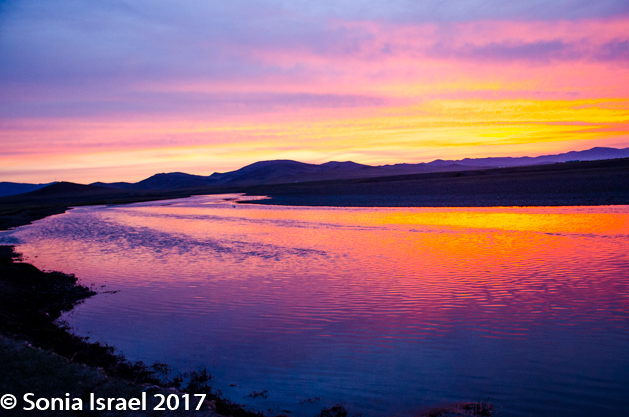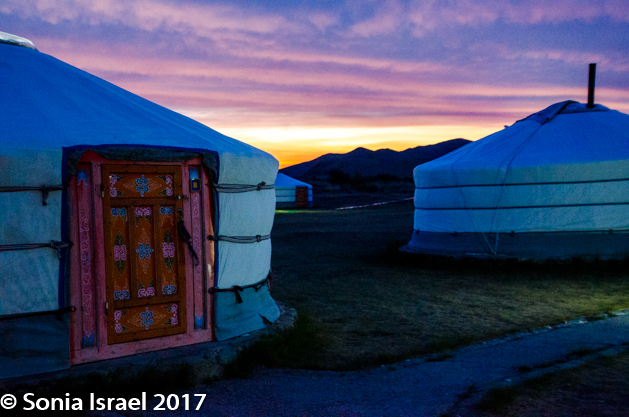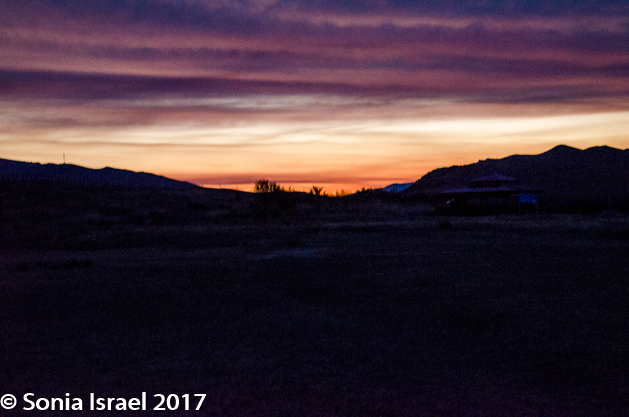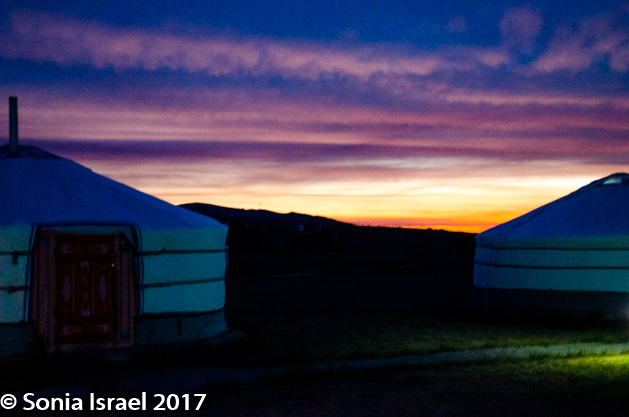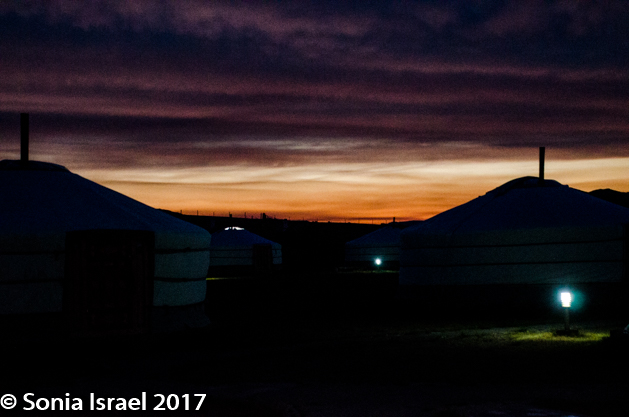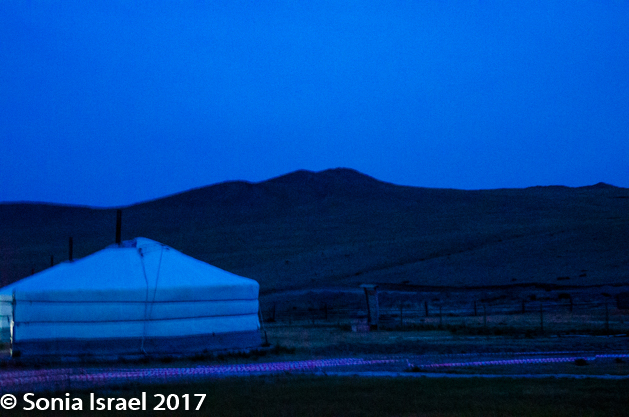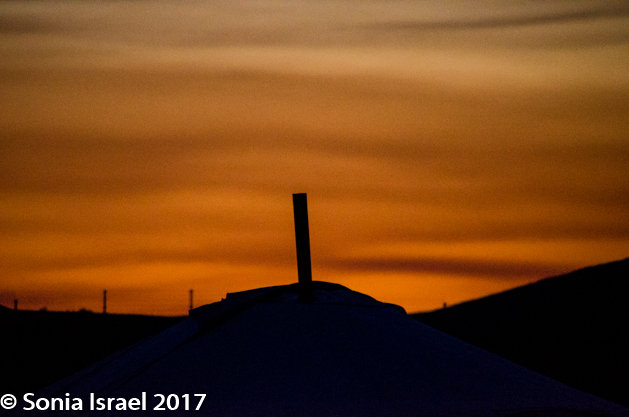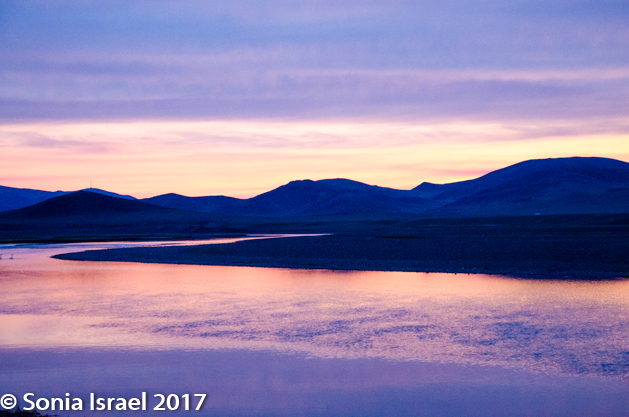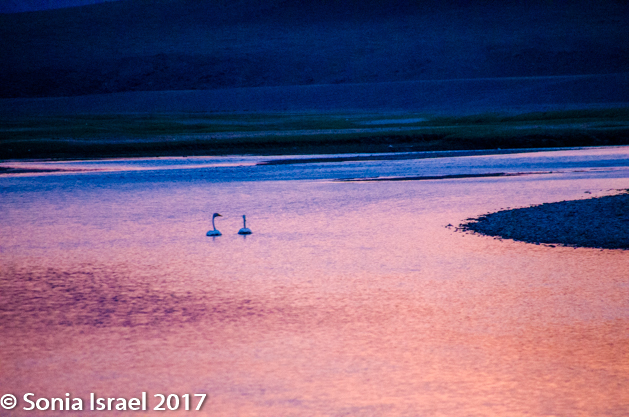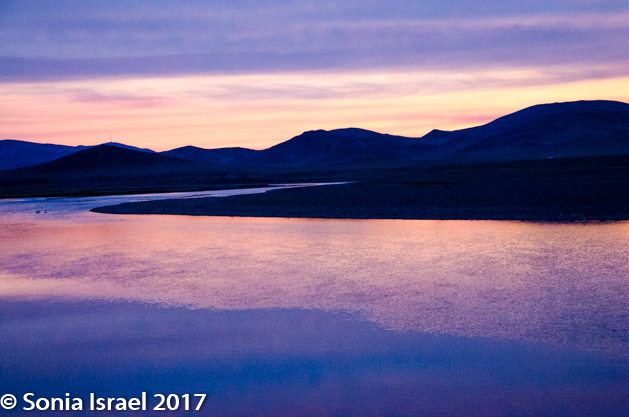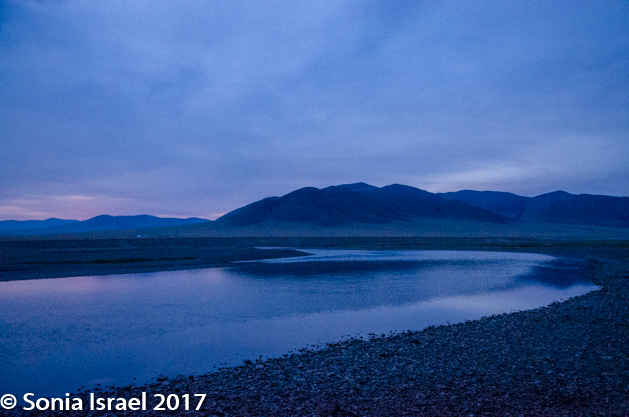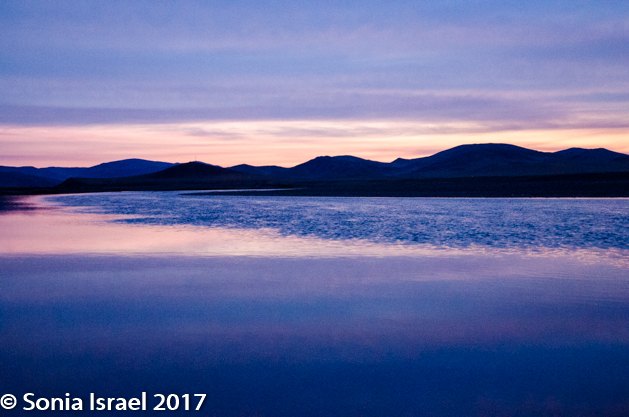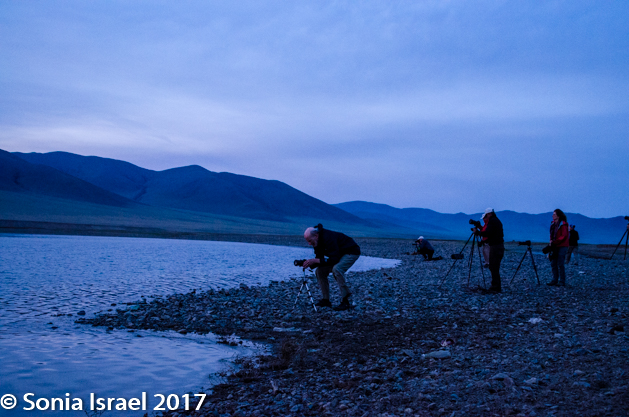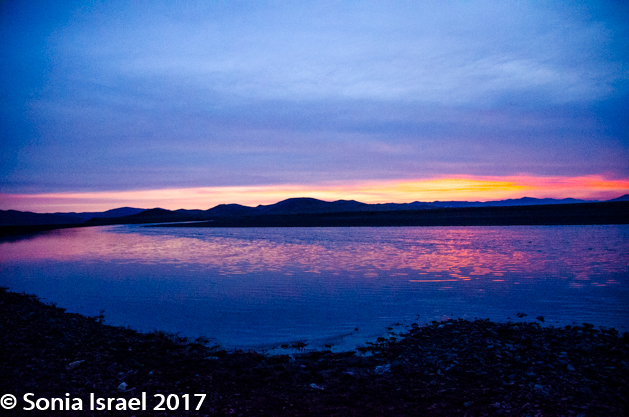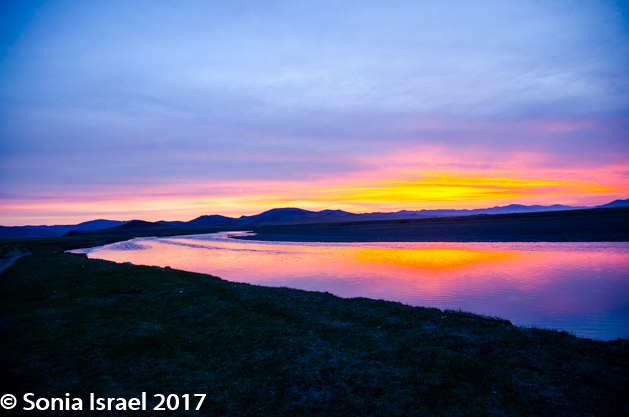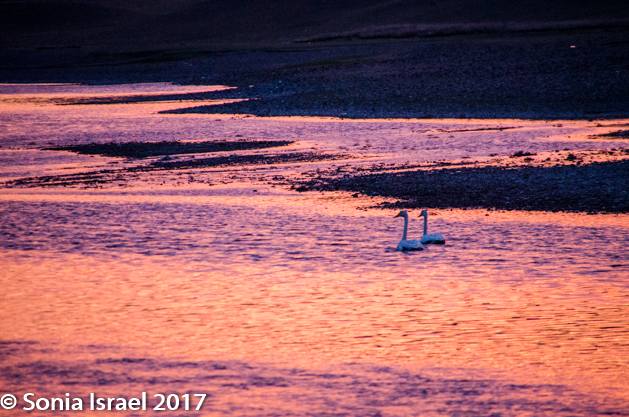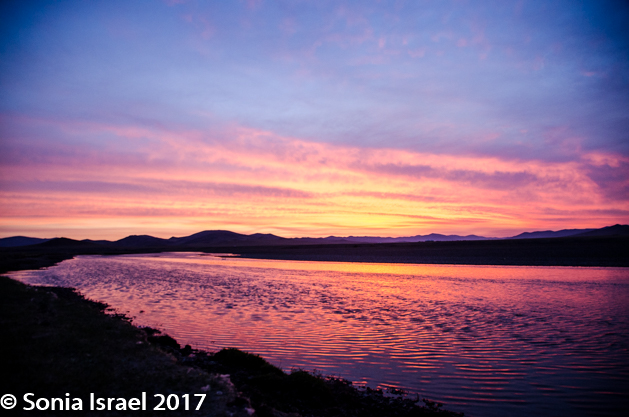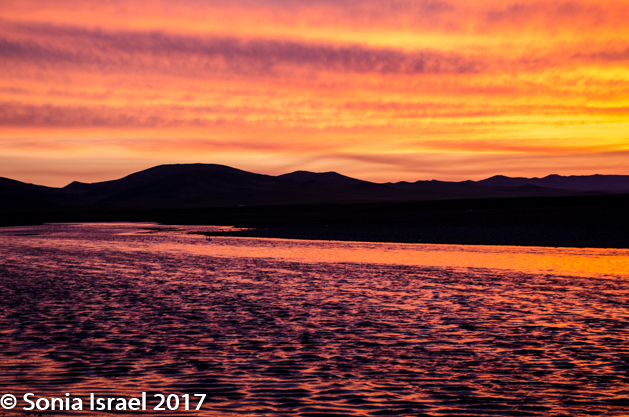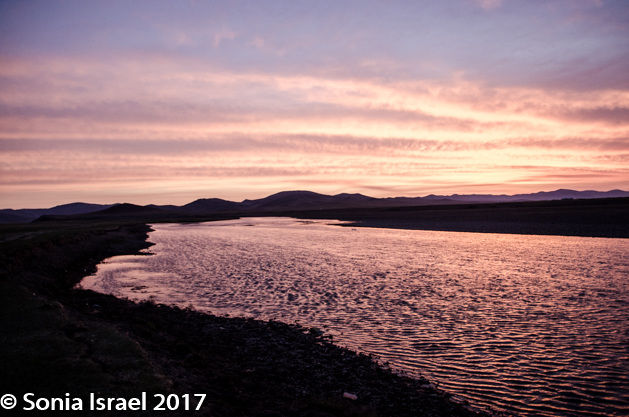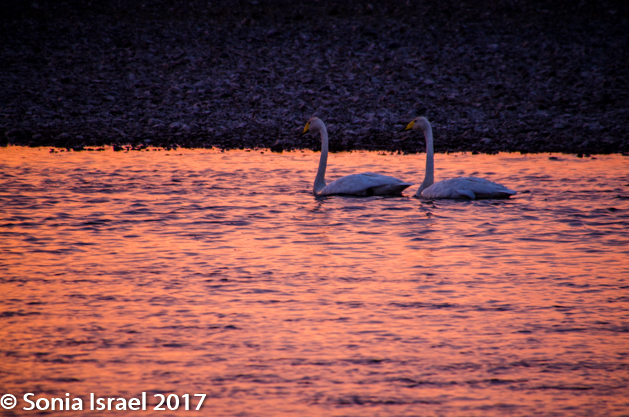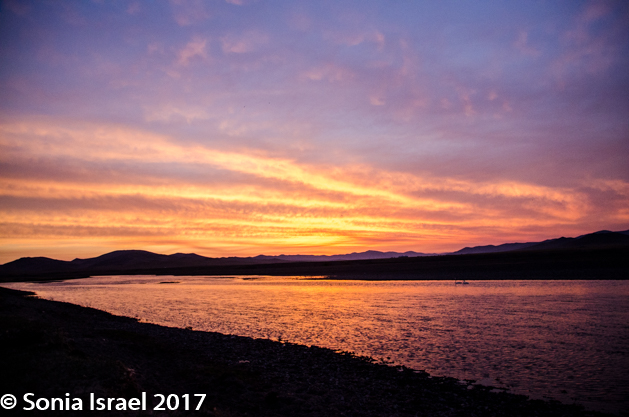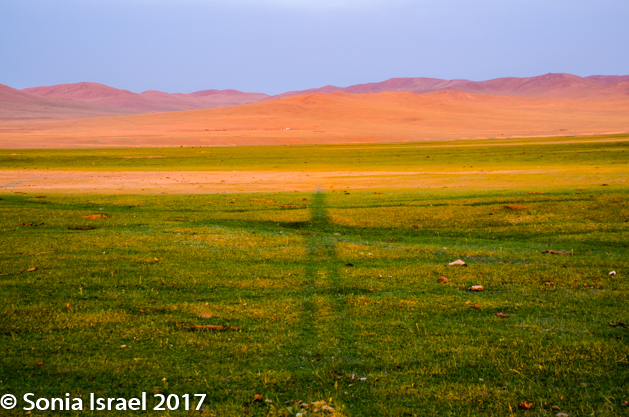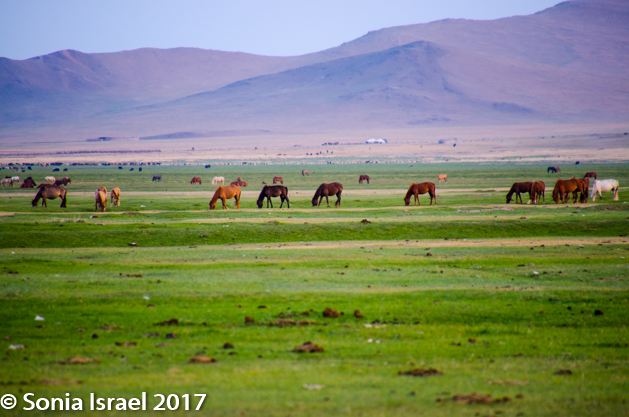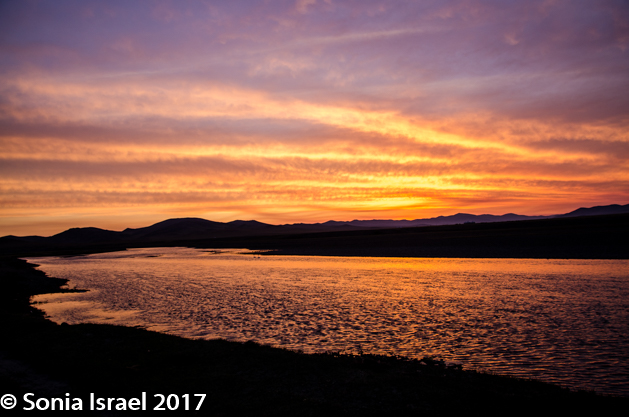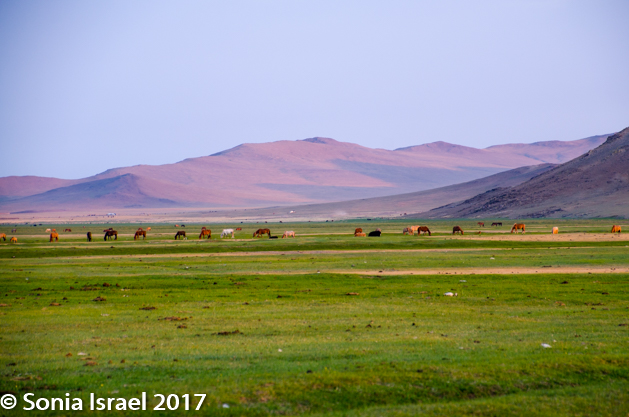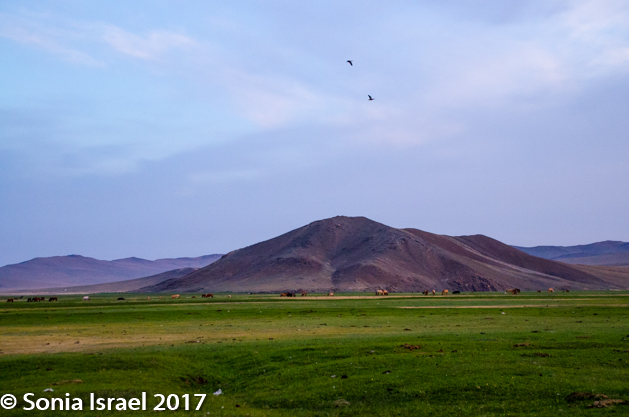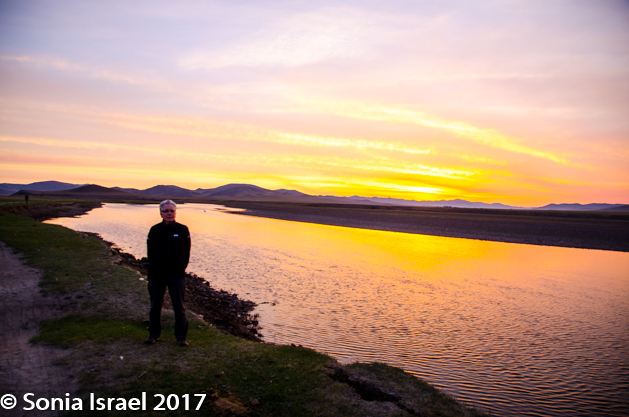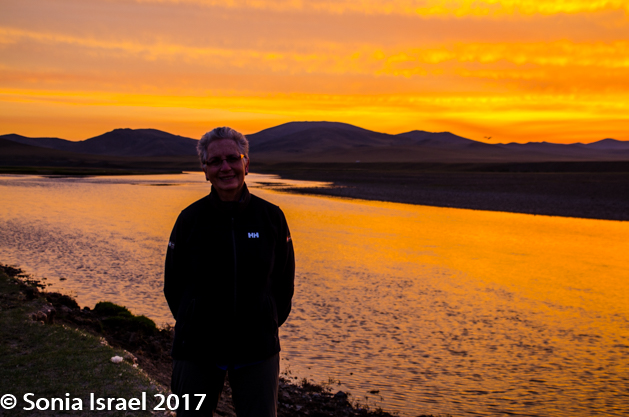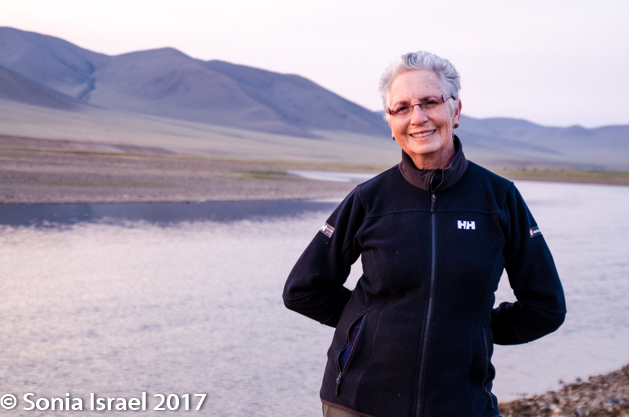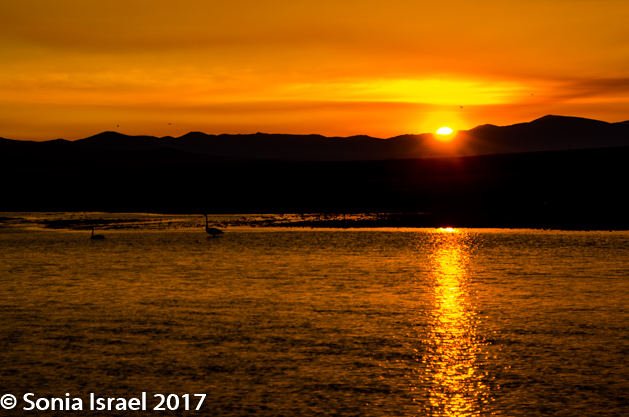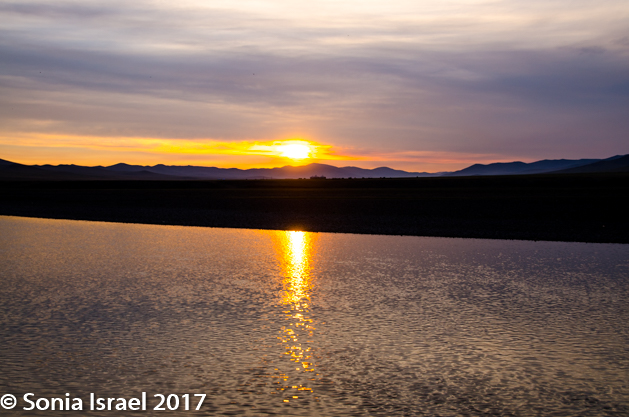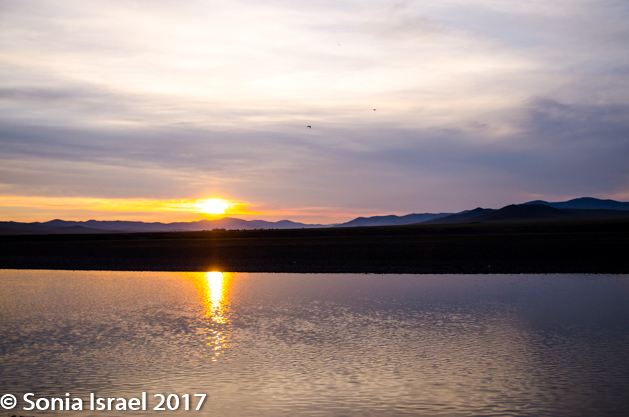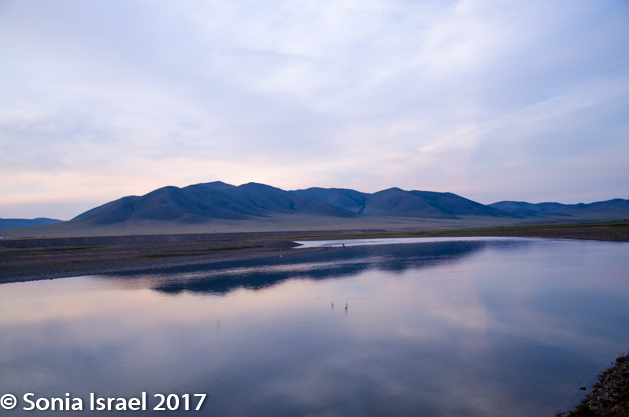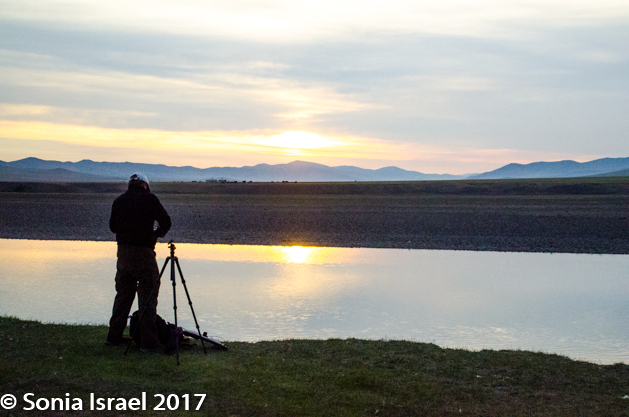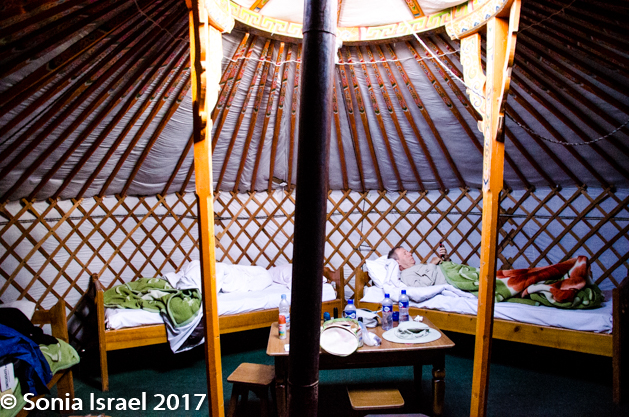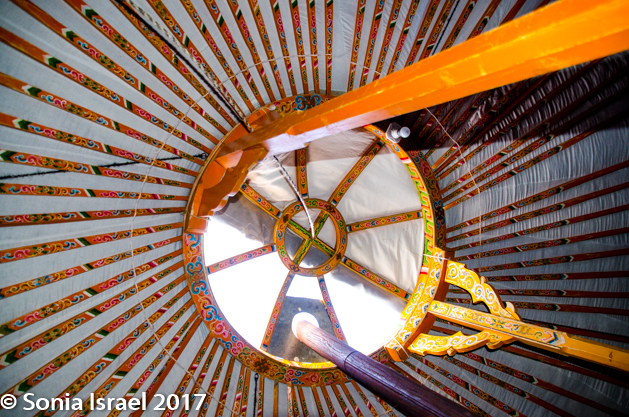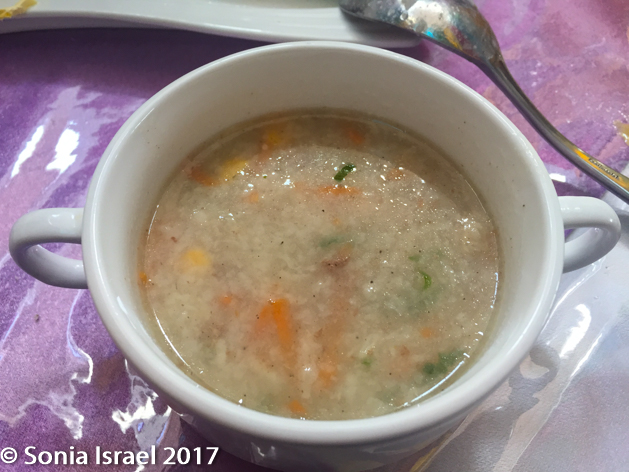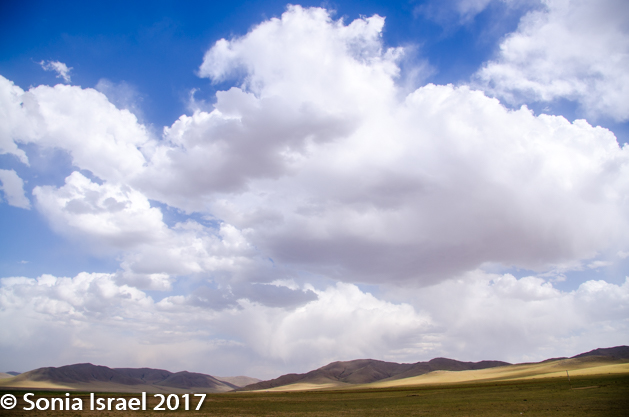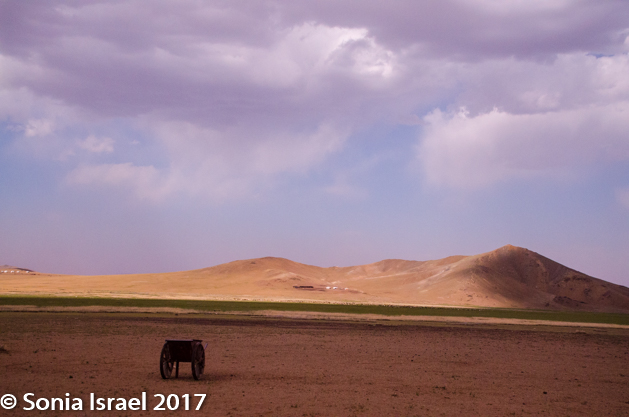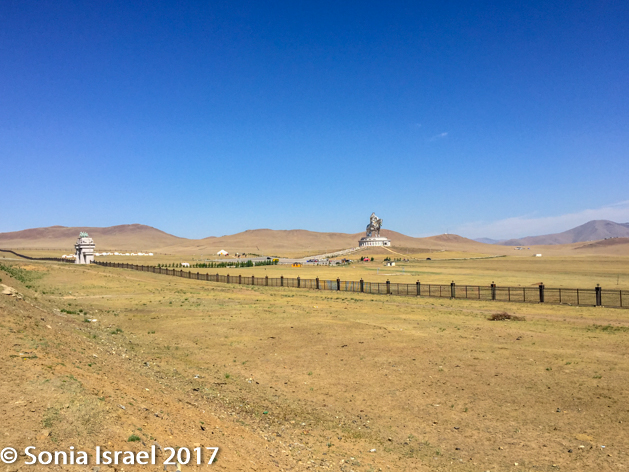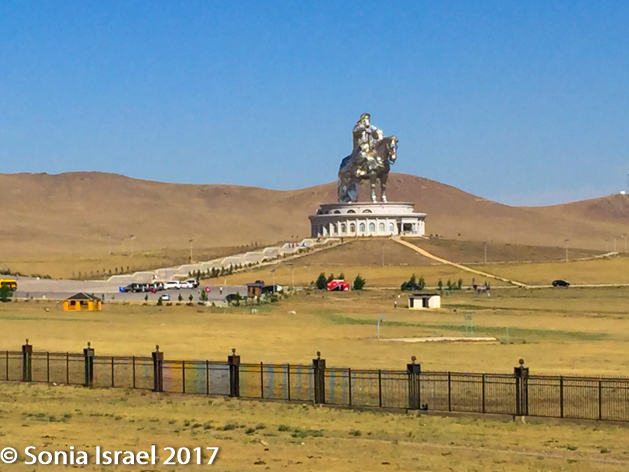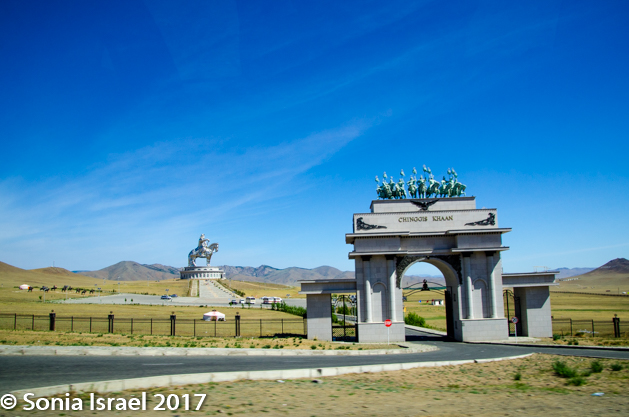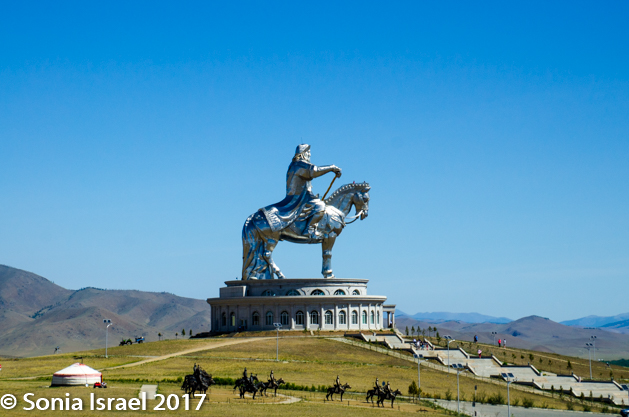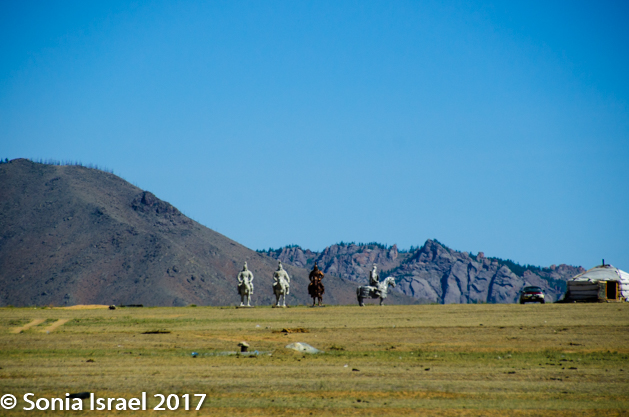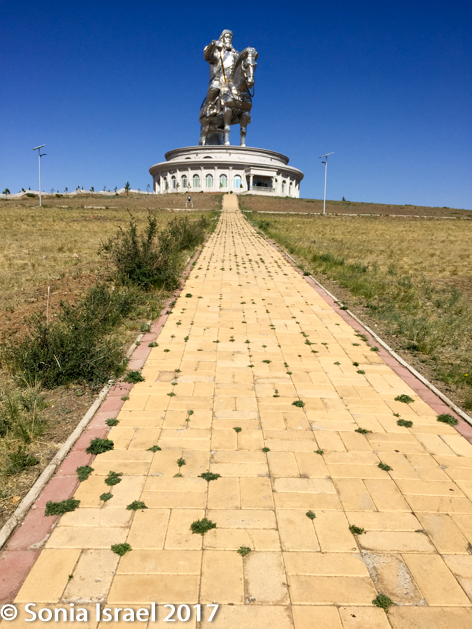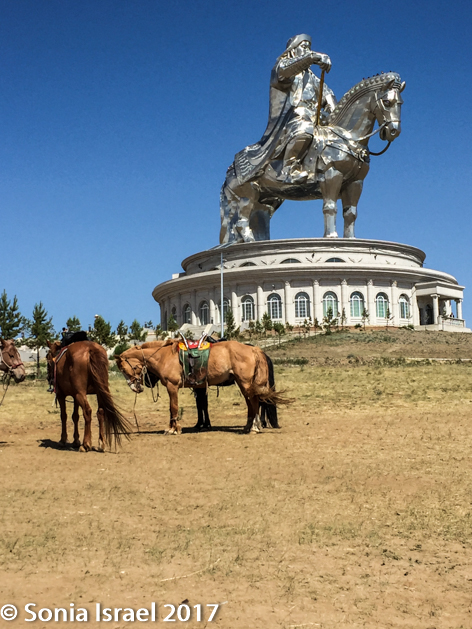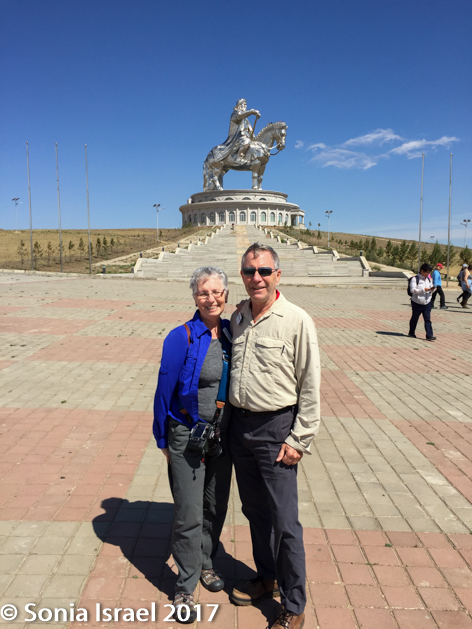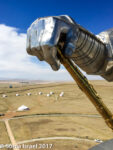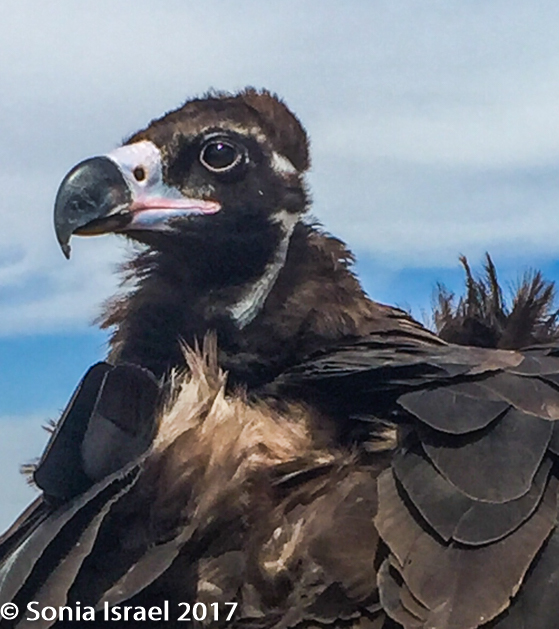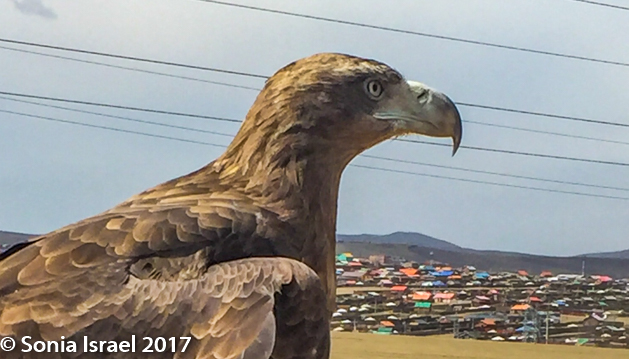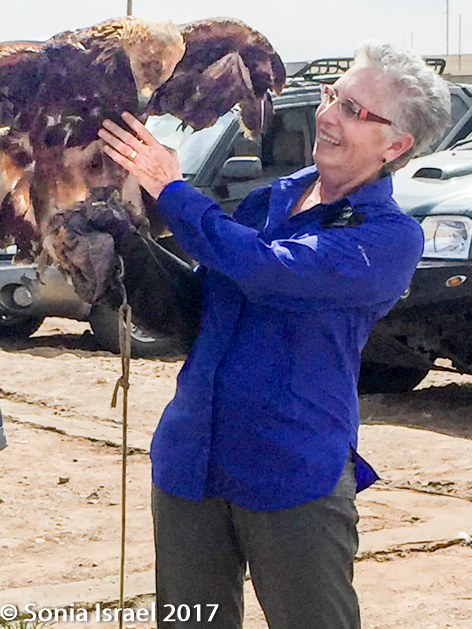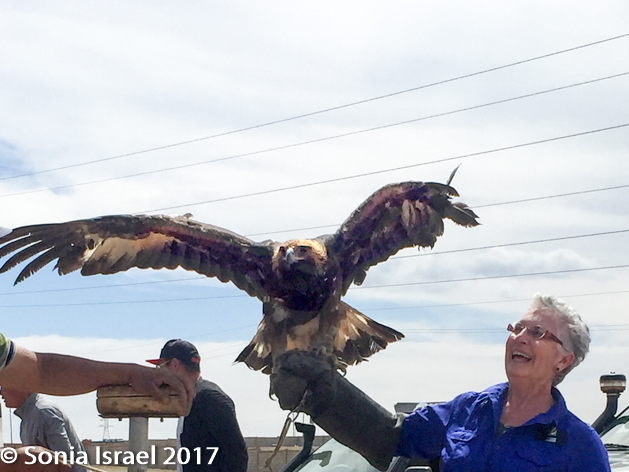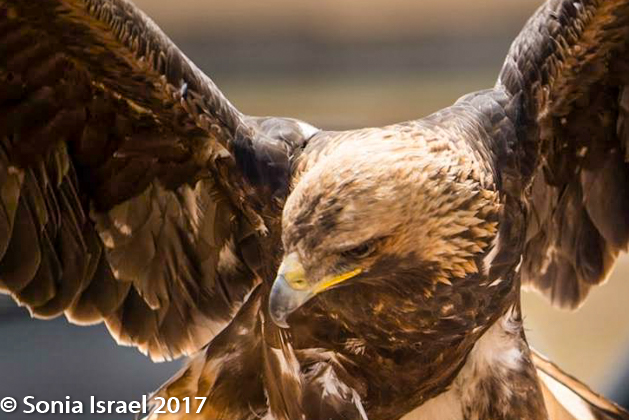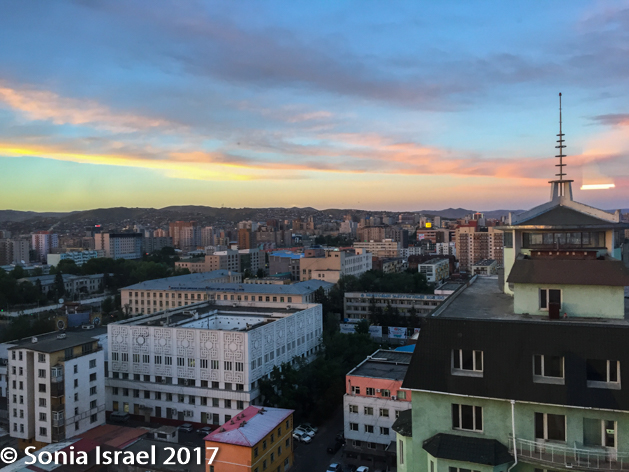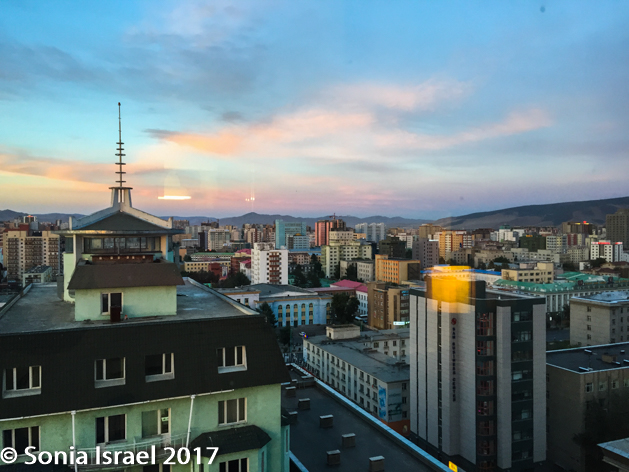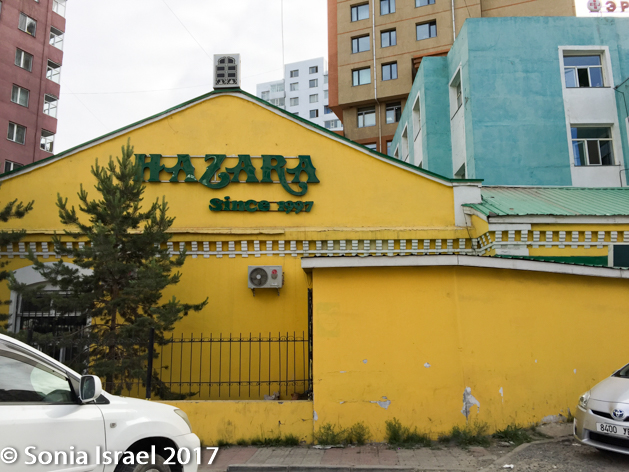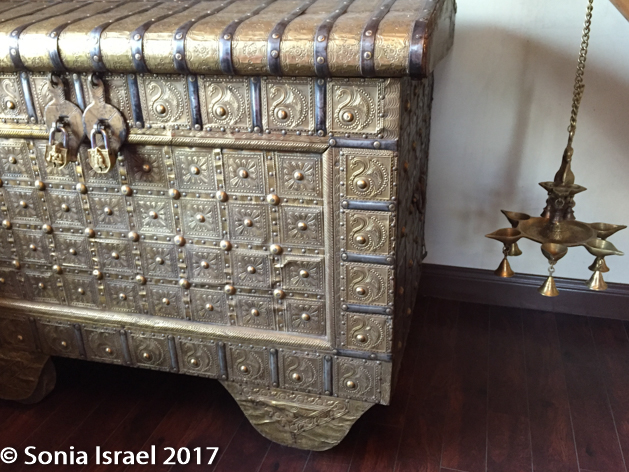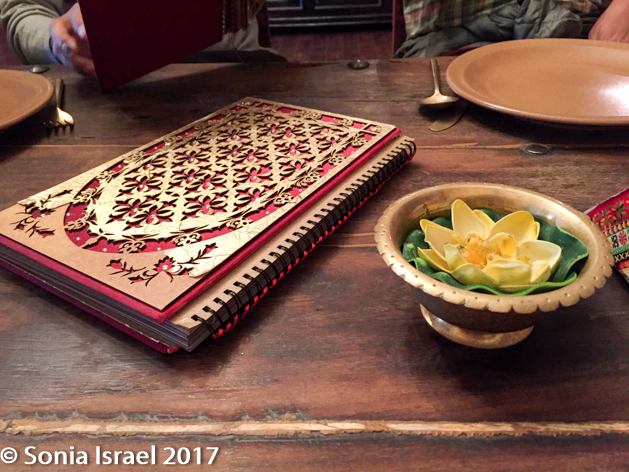National Geographic Trip to Mongolia, Day 4, June 14, 2017
Sunrise again (well, it does rise every morning)
Our itinerary this morning said, “Enjoy a morning at leisure before returning to Ulaanbaatar,” Ha! We were up before the crack of dawn, heading to our next site to photograph another sunrise.
This time we were going to the river to watch the sun come up on the other side of the bank. I was in the car with Michael, our photography teacher, and the car was having difficulties moving across the terrain. Every so often the driver would stop, back up and then go forward again. Michael was going crazy as we were racing the sun.
But we made it. Tripods were set up and the clicking began as the sun peeked out over the horizon. Two swans were floating in the water as the sun rose, as if posing just for us. The water turned from a dark blue, almost black, to pink and orange and then red.
When I turned around to look behind me, I saw the mountains and the valley washed in sunlight and colors of yellows and greens. And my shadow, making me look 10 feet tall. Then when I turned back to the river, I saw the reflections of the mountains in the water. And when the river turned back to blue, it was time to head back to camp for breakfast.
Andy was still lazing in bed, so I woke him up and we went to the dining hall for a breakfast that included a type of porridge or soup made from lamb and vegetables.
The Genghis Khan Statue
Most of today was spent driving back to Ulaanbaatar.
On the way out to the steppes, we had passed the enormous statute of Genghis Khan on his horse on the banks of the Tuul River. Azaa promised we would stop upon our return. And stop we did. This is not just his statue, but a whole complex which also includes a visitor’s center which has 36 columns representing the 36 khans from Genghis to Ligdan Khan. The statue is in this particular spot, what seems like the middle of nowhere, because it is believed that Genghis Khan found a golden whip here. He and his horse are facing east, towards his birthplace.
We walked up the long, long path and as we got closer, Genghis got bigger and bigger. The statue is 131 feet tall and is wrapped with 250 tons of stainless steel with a copper sword. In the inside of the building, alongside the souvenir shops, is a tall boot, standing 29 feet high. Genghis was a big man….
We took the elevator, which held about 4 people at a time, up to the top, climbed a few more stairs and found ourselves on the horse’s head, with the huge face of Genghis Khan, and his sword, right above us. One couldn’t help think about what a great man he was. Larger than life while still in life. Larger than life still.
As we stood on the horse’s head, we enjoyed the panoramic view of 200 gers arranged like the pattern of the horse brand marks that were once used by  the 13th century Mongolian tribes. There were also warriors on horseback protecting their leader. And in the distance, a statue of his wife, Börte.
the 13th century Mongolian tribes. There were also warriors on horseback protecting their leader. And in the distance, a statue of his wife, Börte.
Who was Genghis Khan?
And let’s talk about this leader. Genghis Khan was the Mongolian warrior who, during the 13th century, conquered half of the known world, including most of modern-day Russia, China, Korea, southeast Asia, Persia, India, the Middle East and eastern Europe. They reshaped world geography, culture and history in ways that still resound today.
He is remembered for both the good and the bad. He was brutal and brought destruction upon those he conquered which resulted in the death of 40 million people. But in Mongolia, he is a national hero. Why? Because he founded the Mongol Empire which became the largest contiguous empire in all of history. He revived the Silk Road. He united the warring tribes of the time. And he put Mongolia on the world map.
After the Soviet occupation ended, large numbers of monuments celebrating Chinggis Kahn (the Mongolian name for Genghis) were erected. The international airport was renamed after him. The University was renamed after him. The main hotel in Ulaanbaatar was named for him. And his face appeared everywhere from liquor bottles to candy to the local currency.
And then in 2008, the ultimate honor was given to him when his gigantic statue was erected. The Chinggis Khan Statue is currently the biggest equestrian statue in the world. And down the road is a large statue of his wife, Tumanba Khan.
When Chinggis Khan died, his body was taken back to Mongolia and buried somewhere in the mountains near his place of birth. All those that took part in funeral procession were put to death to guard the secret of its location. This reminded me of terra-cotta warriors in China.
Eagles
We were back on the road when Azaa suddenly called for the caravan to stop. There were eagles just waiting to be held. Yes, this was very touristy. Yes, we had to pay 4 Tughrik (the Mongolian currency, which was about 16 cents), to hold them. But hey, we were in Mongolia, land of the eagles after all. So we climbed out of our cars and took turns holding an eagle. There were two eagles, one a bald eagle (quite large) and one a golden eagle, a bit smaller. I opted for the smaller one. The owner put a glove on me and the eagle jumped on my arm. I couldn’t help but smile in wonder – wonder that I had the nerve to hold an eagle, and wonder that I was actually holding an eagle. This is Mongolia.
There were also some vendors there and I was able to find some Mongolian beads for my beading collection. I had been keeping my eyes open and this is exactly the type of place to find them. Along the side of the road, waiting for the tourists to appear. And I did.
WWF (World Widelife Fund)
We arrived back at the Tushin Hotel, collected our luggage and checked back in. We didn’t have much time as we were scheduled to have a guest speaker from the WWF. He spoke all about Mongolia. How the average elevation is just over 5000 feet, 81% of the land is pastures, only 8% is forest or woods. There are 143 different mammals, 476 birds and 3200 plants. All in all, there are 70 million animals in Mongolia. The number of animal has surpassed the capacity of the land, which leads to overgrazing. And there are other threats to biodiversity, including fire, climate change (yes, it is real), illegal logging, unpaved and illegal roads leading to multi-tracking (we certainly saw this), poaching, unregulated hunting, unregulated tourism and water pollution. That’s a long list. As more and more nomads are forced to move into the city, as more and more horses are traded in for trucks and motorcycles, as more tourists, like us, discover this beautiful place, there will be more and more threats. We noticed this ourselves, as we drove closer to UB, there were more and more plastic bags all along road. Progress?
Before dinner, we headed up to the bar at the top of the Tushin Hotel where we had a free glass of wine or beer. We sat on the comfortable chairs and couches, drinking our wine and marveling at the 360 degree view of the tall, modern buildings surrounded by the mountains covered in gers and colored tin roofs.
Dinner at Hazara
Dinner that night was on our own, but, on Praveen‘s recommendation, we all went together for Indian food at Hazara. The restaurant itself was beautiful with carved wood and flowers everywhere. We sat at one long table with some sharing the spicy Indian food, and others choosing a milder dinner. But mostly it was nice to all be together.
[contact-form][contact-field label=”Name” type=”name” required=”true” /][contact-field label=”Email” type=”email” required=”true” /][contact-field label=”Website” type=”url” /][contact-field label=”Message” type=”textarea” /][/contact-form]
